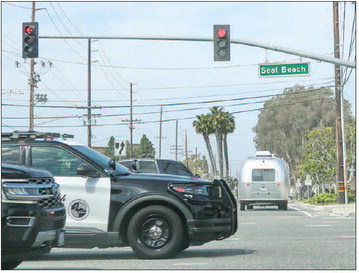What to do if your email has been hacked
WATCH YOUR STEP
Scammers hack email accounts so they can send fake messages from a trusted email address in hopes of getting recipients to take immediate action. The ultimate goal could be to get email contacts to send money, turn over personal information, or click a link that installs malware, spyware, or a virus on the victim’s device.
It’s important to know the signs of a hacked email account so the scammers can be stopped quickly. Before panicking, look for these three indicators that your email account has likely been hacked: You can’t log into your email account: When you try to log in, you may get a message that your username or password is incorrect. This could mean the hacker changed your credentials to lock you out of your account.
Your sent messages folder looks odd: Your sent messages folder may hold scammy messages or the folder may be sitting empty when you never deleted your sent messages.
Strange messages appear on your social media accounts: If your latest Facebook post or tweet is touting some product you’ve never used, a hacker may have gained access to both your email and social media accounts. Your email can act as a gateway into other accounts. The hacker can simply click “forgot password” at login and have a password reset link sent right to your email inbox, which they now control.
A hacked email can put you and your email contacts at risk for identity theft or credit card fraud. If you think your email has been hacked, take quick action to minimize the damage by taking back control of your account and warning your contacts. If the hacker has locked you out, you may have to contact your email service provider for help. You will probably have to provide an array of information to prove your identity and regain control of your email.
If you do still have access to your account, make these changes right away: Get a new username and strong password: Secure passwords should contain at least 12 characters, including numbers, symbols, and a mix of capital and lowercase letters. Use a unique password for every account.
Change your security questions: The hacker may have gotten access to your account by guessing the answers to security questions. Avoid choosing questions with answers that can easily be guessed or found online such as your or your mother’s maiden name.
Turn on two-step verification: This extra security measure typically requires you to enter a username and password along with a temporary passcode to get into an account. For example, the service provider may send the one-time passcode to your phone each time you try to log in. Without your phone, a hacker will be much less likely to gain entry into an account that has two-step verification turned on.
To prevent this from happening in the first place, take these steps:
Check your settings: Hackers may change settings to further compromise your email security. Check your email signature to make sure it doesn’t contain any unfamiliar links. Look to make sure your emails aren’t being auto-forwarded to someone else.
Scan for trouble: Look for signs of a computer virus on your computer, phone or tablet. This includes strange pop-up windows, slowness, problems shutting down or restarting, and unfamiliar applications on your device.
4. Protect yourself for the future.
Make sure to put a few simple measures in place to make it less likely that your email account gets hacked again:
Update frequently: Make sure you are running the latest versions of your apps, browser, operating system and software. The newest versions often contain patches to fix security flaws hackers can exploit. You may also want to delete any apps you don’t use or that aren’t being updated regularly by their developers.
Add security software: Get security software from a reputable company and install it on all of your devices. If you already have security software, make sure you’ve got the latest version and run it to check for malware, spyware and viruses.
Now that you know what to do, you can put a plan of action in place in case you ever do get the dreaded “you’ve been hacked” message from a friend. That will allow you to regain your account and your peace of mind more quickly.
–from Norton LifeLock 360, www.norton.com



